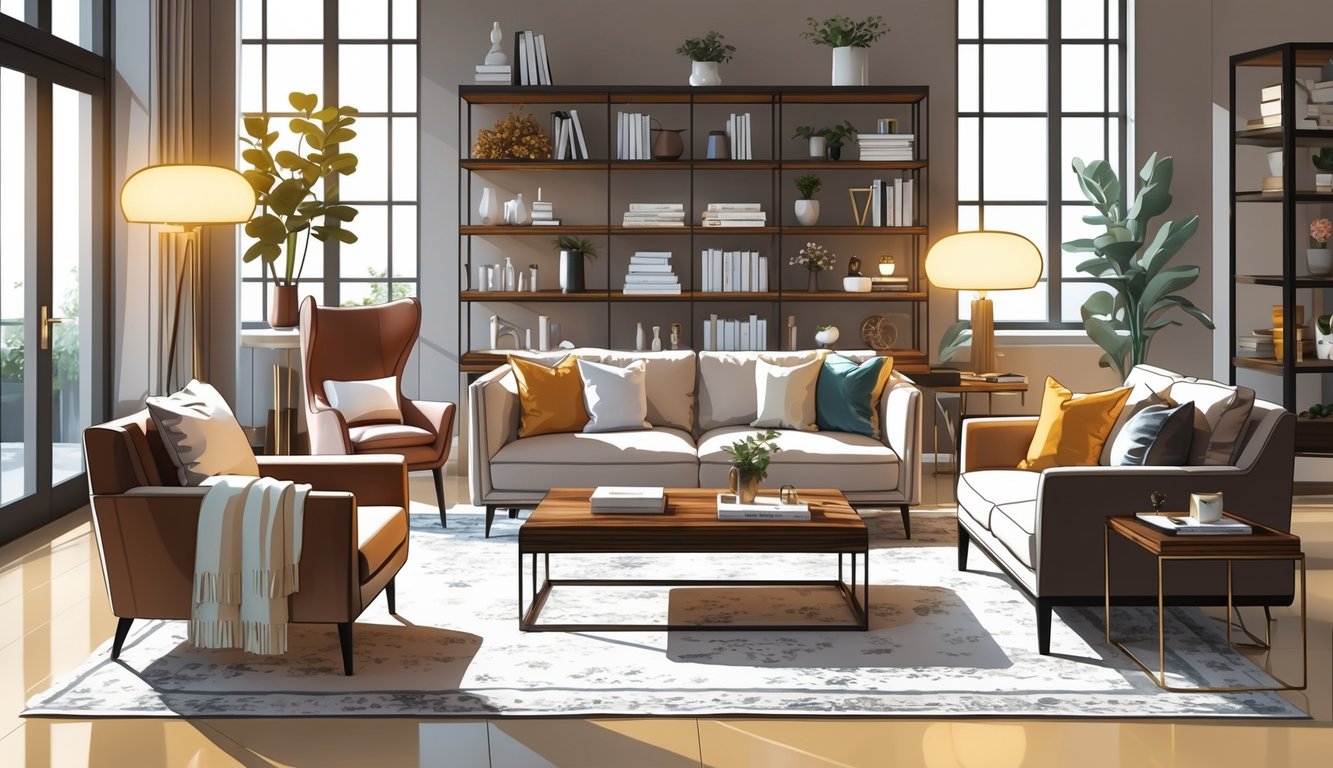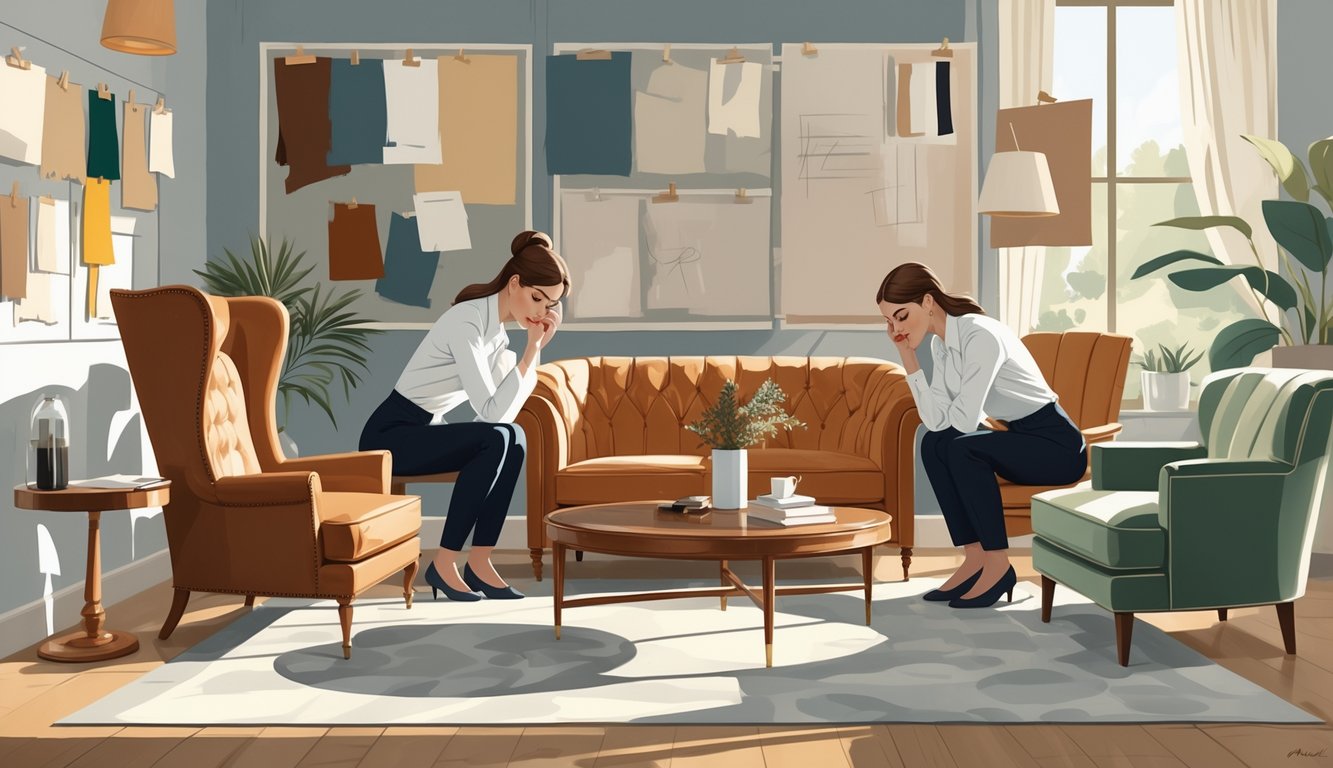
Okay, so here’s the thing: I’ve been on this endless, humiliating journey with my so-called “practical” velvet sofa. Should’ve listened. People told me to buy “forever” furniture, but nope, I thought I was clever, went for a mid-priced option, and now I’m living in sag city. If I could time-travel, I’d never, ever cheap out on the big foundational stuff. Cheap furniture just… dies. Sagging, cracking, mystery stains—then you’re back at the store, mad at yourself, wallet lighter, dignity gone. I know a designer who’ll corner you at a party and rant about real hardwood dining tables because she’s seen too many clients cry over veneer disasters. Honestly, after my IKEA dresser’s bottom just… fell out? Yeah, I believe her.
But here’s what really gets me: everyone’s obsessed with these trending “statement” pieces—like, those rattan chairs you see all over Pinterest or some weirdly shaped side table. It’s all so photogenic, but nobody mentions you need a couch that won’t collapse while you’re doomscrolling. Did you know “cheaping out” is the #1 regret in home design, according to some survey I can’t even remember the name of? Probably because nobody’s posting their busted credenzas on Instagram. My friend’s “stylish” credenza? Hollow-core, warped in one summer, now the doors won’t even shut.
Still considering that budget sofa? Sure, enjoy it for six months, then try getting up after a Netflix marathon—your knees will hate you. Skipping quality in the stuff you actually use every day? It always bites you. My mentor (she’s styled apartments since the ‘90s, hates “fast furniture” with a passion) basically made it her life’s mission to warn people: pay up now or pay more later. But, ugh, who wants to hear “I told you so” from their own couch? Not me.
Why Investment Furniture Matters Most
Look, I tried to outsmart regret with bargain finds. Didn’t work. Turns out, “investment furniture” isn’t just some snobby status flex. It’s literally the difference between fixing a wobbly chair every six months and having something that just… stays put. Designers aren’t inventing this stuff to make us poor. There’s data, there’s logic, there’s—wait, am I really defending furniture now? Whatever. It matters.
Understanding Lasting Value
Here’s what I still can’t get over. Scroll through any real estate listing, watch a Nate Berkus video—investment furniture is about surviving life, not just looking good. My neighbor’s $199 coffee table? Toast by year two. Meanwhile, she could’ve gotten a solid maple piece that holds up, maybe even sells for something in a decade. Particle board? Straight to the curb. Most people skip kiln-dried hardwoods, like it’s a tiny detail. It’s not. Furniture Clinic’s 2023 data says repairs for “fast furniture” cost double, and half the time, it’s not even fixable. Want your stuff to survive moving, humidity, toddlers, whatever? Buy real materials. Why do we all forget this when we’re scrolling deals at 2am?
Functionality Meets Style
And I’m not even talking about “timeless” looks. Who cares if it’s trendy if the drawers stick and the fabric pills before your first coffee spill? I visited a stylist’s apartment—she had this Arne Jacobsen Egg Chair from the ‘70s, looked like a spaceship, but she swore it’s the one thing clients always regret skipping: comfort and quality. Not whatever’s trending on TikTok. Design gets complicated when you realize that cute thing is actually a nightmare to use.
You know why steel-framed beds, modular sofas with slipcovers (IKEA SÖDERHAMN if you’re broke, B&B Italia if you’re not), and stone tables are everywhere on “heirloom” lists? Because they work. Hand-tied springs, hidden storage, joints that don’t creak—suddenly, you’re not thinking about replacements. But nobody warns you about the money lost on throwaway trends until your third bookshelf collapses. Then it’s just you, surrounded by splinters, wondering what went wrong.
Avoiding Short-Lived Trends
I can’t even count how many times I thought a “sculptural” or “statement” piece would be forever, only to watch it scratch, chip, and look ancient before the return window closed. The “fast furniture” trap is real. World Economic Forum says Americans toss out 9 million tons of furniture a year. Why? Because that “chic” piece is already broken or embarrassingly dated. My friend once paid $180 for a mirrored nightstand—sold it for $15. She called it “design FOMO.” Accurate.
Designers always say: skip the fleeting trends, stick to neutral palettes, real woods—walnut, oak, whatever. Sounds boring, but it saves you from regret. Tables with replaceable tops, beds you can repaint, stuff you’d actually hand down instead of sneak out to the curb. Has anyone, ever, cried over not buying a fake marble side table? Doubt it.
Furniture Choices Stylists Often Regret Skipping

I’ve never met a stylist who doesn’t wince remembering the one thing they didn’t buy. It’s louder in your head than any Instagram regret. Sometimes I’ll stare at an empty corner and remember the thing I passed up, convinced I’d never need it. Spoiler: I did.
Statement Piece Selection
There’s this weird emptiness in rooms where I skipped a statement piece. I told myself, “Minimalism, right?”—turns out, wrong. Everyone says you don’t need a feature chair or wild lighting, but those are the things that make a room feel like yours, not a catalog page.
The Spruce did a survey—41% of people said their rooms lacked personality. I get it. I skipped those Axel Vervoordt coffee tables, thinking boring meant timeless. Now I just regret it. And no, a big-box store print doesn’t count as a statement.
Skipping iconic silhouettes—Mario Bellini sofa, some weird rug—left my spaces a little too “not me.” Stylists spend half their lives trying to fix that for clients, sometimes even going custom. Why do we do this to ourselves?